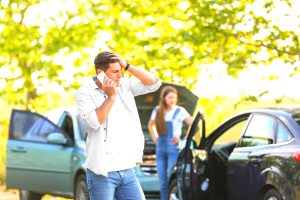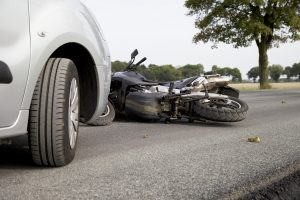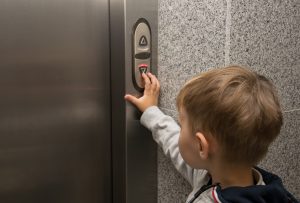Can Both Drivers Be At-Fault in a Fort Myers Car Accident?
 Every single day, there are an average of 1,050 Florida car accidents, according to the Florida Department Highway Safety and Motor Vehicles. Almost always, the cause(s) of a crash can be traced to driver error. Common Fort Myers car accident catalysts include things like speeding, failure to yield, improper turning, following too closely, driving carelessly or recklessly, disregarding traffic signs or signals, failure to maintain proper lane, and driving while distracted or impaired.
Every single day, there are an average of 1,050 Florida car accidents, according to the Florida Department Highway Safety and Motor Vehicles. Almost always, the cause(s) of a crash can be traced to driver error. Common Fort Myers car accident catalysts include things like speeding, failure to yield, improper turning, following too closely, driving carelessly or recklessly, disregarding traffic signs or signals, failure to maintain proper lane, and driving while distracted or impaired.
But what if both drivers were at-fault in a crash?
As longtime Fort Myers car accident lawyers, we know it’s fairly common that both drivers shoulder some degree of responsibility for the collision. But what truly influences the dollar amount outcome in a Florida car accident case is not so much whether the injured plaintiff (the person filing the claim) shares any blame at all, but rather: How much?
This is because Florida follows a system of pure comparative negligence (referred to in F.S. 768.81 as comparative fault).
What is Pure Comparative Fault – and Why Does it Matter in Fort Myers Car Accident Cases?
Pure comparative fault means that in any negligence action – including car crash claims – the at-fault parties are only responsible to pay for their own portion of the blame. So in a two-car crash with both parties sharing some measure of fault, the damage award (legalese for financial compensation aka money) that is available to the plaintiff will be proportionally reduced by how much of the blame they share.
For example, if Driver 1 was 30 percent at-fault, Driver 2 was 70 percent at-fault, and total damages topped $100,000, the most that Driver 1 could collect as a Florida plaintiff would be $70,000. Conversely, the most Driver 2 could collect as a plaintiff would be $30,000.
“Pure comparative fault” means that even a person who is 99 percent at-fault for a Fort Myers car accident could still collect on 1 percent of their total damages from the other at-fault driver. That said, collecting only 1 percent of damages (ex: $1,000 on a $100,000 claim) isn’t a desirable outcome for any plaintiff. Skilled South Florida injury lawyers know how to make effective legal arguments to help minimize assertions of comparative fault – with the end goal of maximizing your damage award payout.
It should be noted that Florida is in the minority of states for its pure comparative fault law. Most other states with comparative fault laws impose a 50 percent or 51 percent “bar.” That means each person or entity is only financially responsible to cover their own percentage of fault. BUT if the plaintiff is 50+ percent to blame, they will be barred from collecting anything at all. Some states take it even further, holding that if a plaintiff shares just 1 percent of fault, they are barred from collecting anything at all.
So Florida is actually one of the most plaintiff-favorable states in this regard. However, that doesn’t mean your car accident case will be easy or that you should cede much ground on this issue if you can help it.





 Florida Personal Injury Lawyer Blog
Florida Personal Injury Lawyer Blog



 Southwest Florida is still reeling from the unprecedented devastation of Hurricane Ian, a huge storm with near-Category 5 winds and storm surges that reached 12-18 feet in some areas of Lee County.
Southwest Florida is still reeling from the unprecedented devastation of Hurricane Ian, a huge storm with near-Category 5 winds and storm surges that reached 12-18 feet in some areas of Lee County. In Florida motorcycle accidents, there can be numerous defendants – sometimes including those who weren’t actually behind the wheel. In a recent motorcycle accident lawsuit that settled mid-trial for $1 million, the defendants included the driver as well as the owner of the vehicle, which in this case was the driver’s employer, a commercial cleaning company. They were held responsible by a legal doctrine called vicarious liability.
In Florida motorcycle accidents, there can be numerous defendants – sometimes including those who weren’t actually behind the wheel. In a recent motorcycle accident lawsuit that settled mid-trial for $1 million, the defendants included the driver as well as the owner of the vehicle, which in this case was the driver’s employer, a commercial cleaning company. They were held responsible by a legal doctrine called vicarious liability. Food delivery services, such as Uber Eats, Grubhub, and DoorDash, have been doing booming business in recent years. The online food delivery industry is now generating
Food delivery services, such as Uber Eats, Grubhub, and DoorDash, have been doing booming business in recent years. The online food delivery industry is now generating  In our many years practicing civil law, we have come to recognize there are many misconceptions surrounding Fort Myers personal injury claims. Some relate to the motivations of personal injury attorneys (no, we aren’t paid if we file frivolous claims that quickly get tossed). Others misconstrue how the processes works (no, you aren’t guaranteed a payout just because you were seriously hurt).
In our many years practicing civil law, we have come to recognize there are many misconceptions surrounding Fort Myers personal injury claims. Some relate to the motivations of personal injury attorneys (no, we aren’t paid if we file frivolous claims that quickly get tossed). Others misconstrue how the processes works (no, you aren’t guaranteed a payout just because you were seriously hurt). Drivers who cause South Florida car accidents rarely intend to hurt anyone. However, Florida’s careless driving statute does not consider a driver’s intention. What matters is whether the driver was using reasonable regard for the laws and current road conditions. Failure to use reasonable care, the basic allegation in a careless driving traffic case, is also what injury lawyers assert when alleging negligence in many Florida crash cases. As our
Drivers who cause South Florida car accidents rarely intend to hurt anyone. However, Florida’s careless driving statute does not consider a driver’s intention. What matters is whether the driver was using reasonable regard for the laws and current road conditions. Failure to use reasonable care, the basic allegation in a careless driving traffic case, is also what injury lawyers assert when alleging negligence in many Florida crash cases. As our  A new analysis from the
A new analysis from the  Dangerous home elevators in use at rental properties throughout Florida and across the country have sparked an urgent call from the
Dangerous home elevators in use at rental properties throughout Florida and across the country have sparked an urgent call from the  In any Florida premises liability case, the question of whether the defendant is responsible for the harm someone else suffered on their property often depends heavily on the unique circumstances of the case. Sometimes, that circumstance is a giant ice cream cone.
In any Florida premises liability case, the question of whether the defendant is responsible for the harm someone else suffered on their property often depends heavily on the unique circumstances of the case. Sometimes, that circumstance is a giant ice cream cone. Plaintiffs in a Florida nursing home injury lawsuit were awarded $2.5 million against a memory care center found to have been negligent in its care of an elderly patient.
Plaintiffs in a Florida nursing home injury lawsuit were awarded $2.5 million against a memory care center found to have been negligent in its care of an elderly patient.






